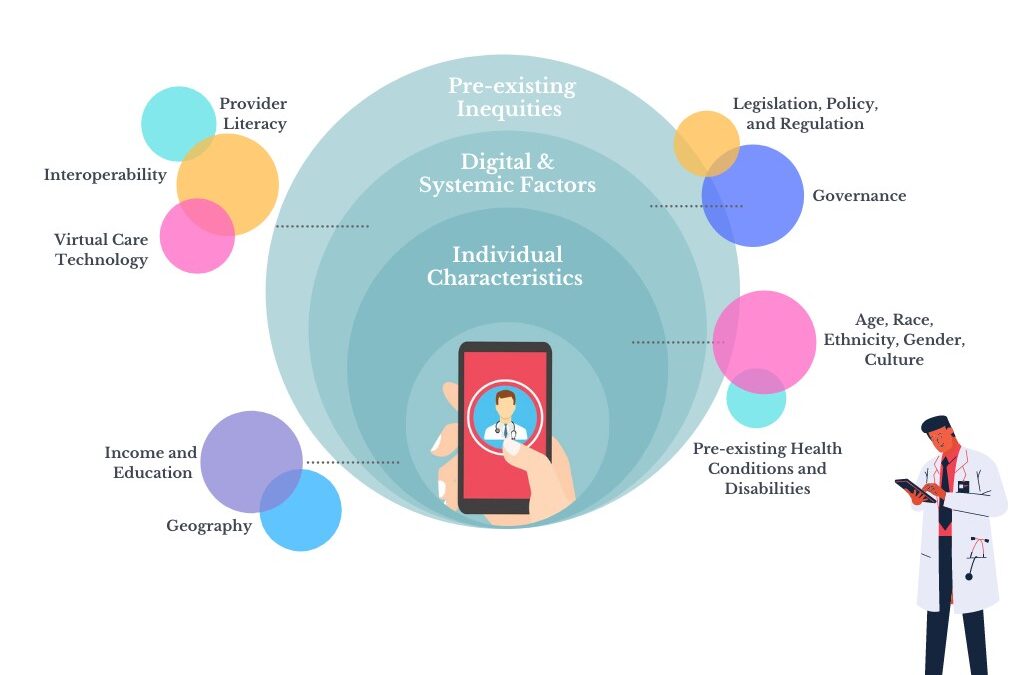Navigating the Digital Health Landscape: Virtual Care in Your Group Benefits Plan
In today’s fast-paced world, convenience and accessibility are king. This holds true not only for our daily lives but increasingly for how we access healthcare. The pandemic undeniably accelerated the adoption of virtual care in Canada, transforming it from a niche offering to a cornerstone of modern healthcare delivery. For small and medium-sized businesses across British Columbia, Alberta, and Saskatchewan, incorporating robust virtual care options into your group benefits plan isn’t just a trend— it’s a strategic move to support your employees and enhance your competitive edge.
What is Virtual Care and Why Does It Matter for Your Business?
Virtual care encompasses any interaction between patients and healthcare providers that occurs remotely, leveraging technology like video calls, phone consultations, secure messaging, and even remote monitoring. It offers a flexible and efficient alternative to traditional in-person visits, making healthcare more accessible, especially for those in remote areas, with busy schedules, or facing mobility challenges.
For your employees, this means:
- Reduced Absenteeism: Quick virtual appointments minimize time away from work for doctor visits.
- Improved Access: Employees can connect with a doctor, specialist, or mental health professional from anywhere, reducing wait times and travel.
- Enhanced Well-being: Easier access to care means health issues can be addressed sooner, contributing to overall employee satisfaction and productivity.
- Cost Efficiency: For both employees and the plan, virtual care can sometimes lead to more efficient use of healthcare resources.
For your business, offering virtual care within your group benefits plan signals that you are a forward-thinking employer who genuinely cares about your team’s well-being and understands their modern needs.
The Canadian Virtual Care Landscape: A Provincial Snapshot
While virtual care is a national trend, its adoption and integration can have unique nuances across provinces.
- British Columbia: BC has been actively expanding its digital health strategy, with initiatives like Health Gateway providing secure online access to personal health records. Virtual Care BC aims to standardize online health care across the province, ensuring consistent guidelines and information sharing. Many BC physicians have embraced virtual consultations, with significant increases in tele-visits since 2020. This robust provincial infrastructure makes integrating virtual care into benefits seamless for BC-based businesses.
- Alberta: Alberta Health Services (AHS) has heavily invested in virtual health, notably through its Connect Care system, which integrates virtual visits (e-visits, e-consults, video-visits) directly into patient records. Albertans also have access to MyHealth Records, allowing them to view their health information online. The province actively supports remote patient monitoring, especially crucial for managing chronic conditions, and its “Virtual Home Hospital” programs aim to deliver hospital-level care in the comfort of a patient’s home.
- Saskatchewan: Saskatchewan has also seen a dramatic increase in virtual appointments, particularly telephone consultations, proving vital for residents in rural and remote communities. eHealth Saskatchewan supports virtual care platforms that meet strict information security and privacy standards. The province is continually working to modernize its telehealth network, with public engagement initiatives aimed at shaping a long-term provincial strategy around virtual care, ensuring it meets the needs of both patients and providers.
Integrating Virtual Care into Your Benefits Strategy
As a business owner, how do you leverage these advancements? It starts with selecting a group benefits plan that not only includes comprehensive health and dental coverage but also prioritizes accessible virtual care options. Look for providers that partner with established virtual care platforms, offer integrated mental health support through virtual EAPs, and provide flexible spending accounts that employees can use for a wider range of digital health services.
The goal is to provide a benefits package that supports your employees wherever they are and whenever they need care. This flexibility is no longer a “nice-to-have” but a competitive necessity, enhancing employee satisfaction, retention, and overall productivity.
The Future is Here
The digital health landscape is continuously evolving, and virtual care is at the forefront of this transformation. By embracing these advancements in your group benefits plan, you’re not just offering a convenience; you’re building a healthier, more resilient workforce, prepared for the future.
